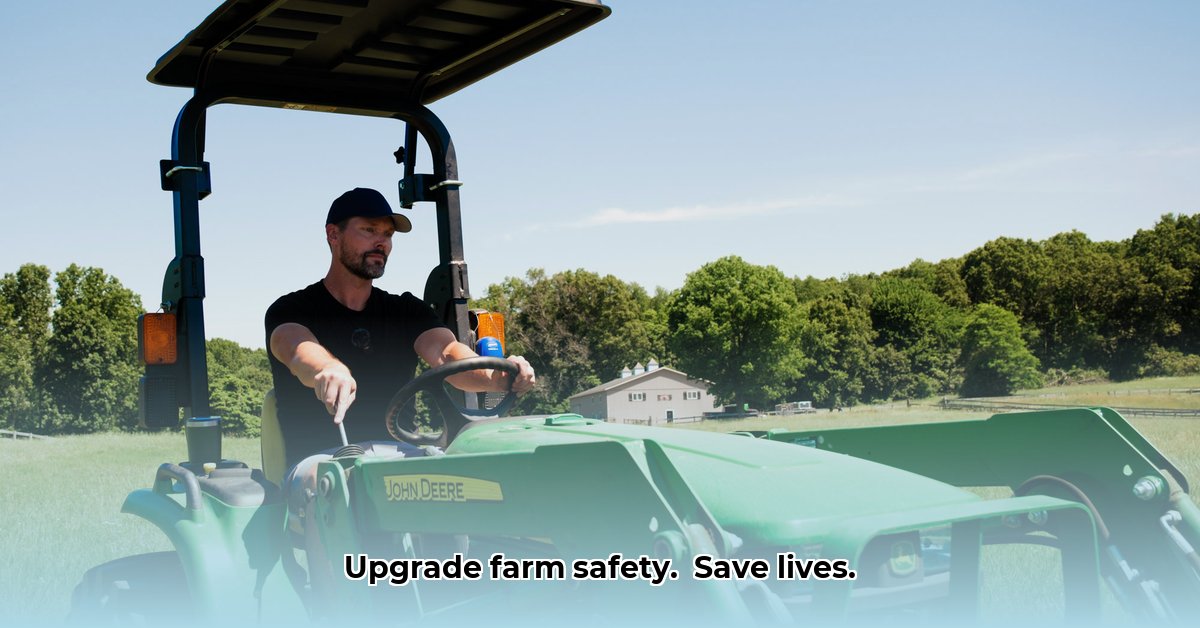
Tractor Canopy Kits: Protecting Your Harvest and Your Crew
Farming demands long hours under challenging conditions. Sunstroke, sudden downpours, and falling debris pose significant risks to farmworkers. A simple, yet effective solution is a tractor canopy kit. This isn't just about comfort; it's a crucial investment in worker safety, increased productivity, and sustainable agricultural practices. For more information on selecting the right canopy, check out this helpful resource: Canopy Kits. This guide provides a comprehensive overview of choosing, installing, and maintaining a tractor canopy, emphasizing sustainable and cost-effective options.
Choosing the Right Canopy: Finding Your Perfect Fit
Selecting the right tractor canopy involves considering several key factors. The material, climate, and budget all play crucial roles in making an informed decision.
Material Matters: Metal vs. Plastic – A Comparative Analysis
Two primary materials dominate the market: metal (typically steel) and plastic (polycarbonate or high-density polyethylene – HDPE). Each offers distinct advantages and disadvantages.
| Material | Pros | Cons | Sustainability Considerations |
|---|---|---|---|
| Metal (Steel) | Durable, long-lasting, excellent impact protection, resists damage | Heavy, potentially expensive, susceptible to rust and corrosion (if not maintained) | Prioritize recycled steel and consider end-of-life recyclability. |
| Plastic (Polycarbonate & HDPE) | Lightweight, often less expensive, can incorporate recycled content | Can degrade with prolonged sun exposure, may offer less impact resistance | Opt for canopies made with recycled materials and check their recyclability. |
Beyond Materials: Climate and Budgetary Constraints
Your climate significantly influences canopy selection. A region with heavy snowfall demands a robust, possibly metal, canopy, while a hot, sunny climate may benefit from a lighter, well-ventilated plastic canopy. Budgetary considerations are also paramount. While plastic is often less expensive upfront, metal canopies may prove more cost-effective in the long run due to increased durability.
Installation: A Step-by-Step Guide to Canopy Success
Installing a tractor canopy is generally a manageable DIY project, but safety must always be the top priority. Strictly follow the manufacturer’s instructions, which are your best guide for a secure and properly fitted canopy.
Step 1: Thorough Preparation: Before starting, read the manufacturer’s manual thoroughly. Gather all necessary tools and components. Understanding each step will ensure a smooth installation.
Step 2: Frame Assembly: Assemble the frame according to the instructions. Take your time, double-checking connections for accuracy to ensure stability.
Step 3: Secure Mounting to ROPS: Attach the canopy to your tractor's Roll-Over Protective Structure (ROPS) using the designated hardware. Ensure all bolts are securely tightened.
Step 4: Final Inspection: After installation, perform a comprehensive inspection. Verify all connections and stability. A wobbly canopy is a safety hazard.
Maintenance: Ensuring Long-Term Canopy Performance
Regular maintenance is key to extending your canopy's lifespan. Regularly inspect for wear and tear (rust, cracks, loose bolts), addressing any issues promptly. Regular cleaning prevents debris buildup, maximizing the canopy’s longevity.
Economic Analysis: Is a Canopy a Sound Investment?
Determining the precise return on investment (ROI) for a tractor canopy can be challenging. However, the long-term benefits frequently outweigh the initial cost.
- Reduced Healthcare Expenses: Protection from sun exposure and falling debris significantly minimizes medical costs associated with heatstroke, sunburns, and injuries.
- Enhanced Productivity: Improved worker comfort and safety boost morale and productivity.
- Extended Tractor Lifespan: Canopies protect tractors from the elements, potentially prolonging their useful life.
While definitive data is limited, many farmers report substantial long-term savings and increased efficiency that justify the initial investment. Assessing your specific situation will provide a more accurate estimate.
Sustainability: A Green Approach to Farm Safety
Sustainable farming practices necessitate considering the environmental footprint of every aspect of the operation. Choose canopies from recycled materials or companies committed to environmentally responsible manufacturing. Evaluate the entire lifecycle, from production to disposal, when making your choice. Sustainability considerations are a vital component of responsible farming.
Regulatory Compliance and Future Trends
Safety and environmental regulations concerning agricultural equipment are constantly evolving. Staying informed about these changes ensures your canopy meets all current and future standards. Staying updated is crucial for responsible and compliant farming practices.
Conclusion: Investing in Safety and Sustainability
Choosing the right tractor canopy requires careful consideration of several interconnected factors: your specific needs, climate, budget, and commitment to sustainable farming. Prioritizing worker safety and well-being directly impacts the long-term success and profitability of your operation. The benefits extend beyond immediate safety to encompass improved efficiency, reduced healthcare costs, and a commitment to environmentally friendly farming practices.